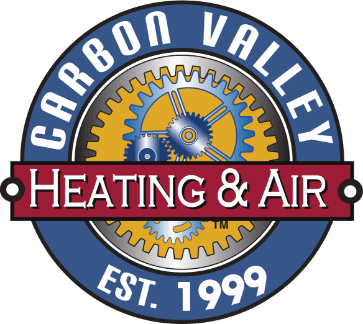Tips for Creating an Allergy Free Home
April showers may bring May flowers, but those blooming flowers bring sneezing, congestion, and watery eyes. During spring the air is filled with pollen from newly budding plants, causing discomfort from allergy symptoms while you’re trying to enjoy sunny, warmer days.
Eventually this pollen will make its way into your home and the higher levels of humidity can create an opportunity for mildew to grow, further advancing the attack on your sinuses. Luckily, there are ways you can improve the quality of air in your home to help alleviate any symptoms you’re experiencing due to allergies.
At Carbon Valley, our job is to make your home a comfortable and inviting place to be. Use these tips to to keep your air clean and those allergy symptoms at bay.
Use a Dehumidifier
During the winter, a humidifier can help soothe irritated nasal passages from the cool, dry air. Come summer time, that same humidifier that brings you relief may end up causing you more trouble than good. In warmer climates, damp air can provoke the growth of mold inside your home, often leaving you with the same symptoms as outdoor allergies.
Using a dehumidifier indoors helps to prevent any mold or mildew growth by keeping the moisture in the air under control. You’ll want to set it so humidity levels are around 45-50%, thus keeping any mold from growing, and preventing your allergy symptoms from flaring up.
Setting your dehumidifier at 45-50% humidity might feel low, but consider the average humidity of Colorado is typically around 50% and can even go as low as 35% most afternoons.
Besides helping with mold, a dehumidifier will also keep dust and dust mites in check. Just as mold thrives in high humidity climates, so do these microscopic relatives of the spider. They’ll nestle into your furniture, bedding, and other areas where dead skin cells accumulate. The good news is that a low humidity home is not a place for dust mites as they cannot survive in areas where humidity dips below 50%.
Install an Air Purifier
In America, over 30 million people suffer from airborne allergies, like hay fever, that are triggered by pollen. While the flowers blooming bring beauty back into your neighborhood after a stark winter, for most it also brings along runny noses and itchy eyes.
Fortunately, using an air purifier can help make most of your day more comfortable by removing pollen or other airborne particles from inside your home. An air purifier works one of two ways – either with a removable filter, or by using an UV light. A filter-type air purifier will be the most common and it’s filters comb the air clean of any floating pollutants. Each time air passes through the purifier, it will get cleaner and cleaner, before sending it back out into your home.
An UV light air purifier uses invisible, ultraviolet light to safely kill any airborne organisms. This includes pollen, which is comprised of living cells, mold, and other floating bacteria. Often, UV air purifiers combine a filtration system with the light to not only destroy the floating allergens, but also prevent them from floating back into your air.
Invest in your A/C System
The way your A/C system functions plays a large role in the quality of air indoors. If your air conditioner is not properly sized for your home, it could be turning on and off throughout the day. If this is the case, it may not remain on long enough to remove the humidity from the air.
Additionally, if your A/C equipment is outdated or hasn’t been maintained, it can also cause issues. When evaporator and condenser coils become dirty, your air conditioner can not adequately transfer heat, resulting in humidity build-up and the likelihood of mildew starting to grow. By cleaning your A/C system and giving it at least an annual tune-up, you can prevent an air allergy issue before it even starts!
Clean, well-routed duct work also plays a role in how air moves through your home. If certain areas are not well ventilated, the still air will allow humidity to rise and airborne particles to linger. If you want to make sure your home is well optimized for airflow and that you have the right equipment, let our qualified HVAC pros take a look.
Replace your Air Filters
While dehumidifiers and air purifiers will provide the best results, one small step you can start to take for cleaner air is replacing your A/C systems air filters. While these filters are used to keep contaminants from entering your air conditioner so it can run efficiently year round, they are also useful in removing dust from the air.
The right filter can go a long way for solving your allergy woes and you’ll want to look for one with a high MERV rating. MERV stands for minimum efficiency reporting value, and the higher this number, the better the filter will be at removing fine dirt and dust from the air. Before picking out a new air filter, consult your A/C systems recommendations or give us a call. Certain air conditioners are designed to be more effective with filters at different MERV levels.
Be sure to also replace your air filter on a regular basis. If you are prone to allergies, change the filter at least every other month, if not more.
Prevent Allergy Symptoms with Clean, Purified Air
By following these tips on keeping the air in your home clean and free of pollen, dust, and other particles, you’ll be able to minimize the effect allergy symptoms have on you. You can also breathe easy knowing that unwelcome dust mites and mildew will not be able to survive and the only living things joining you in your home will be your loved ones, pets, and the occasional house plant.

